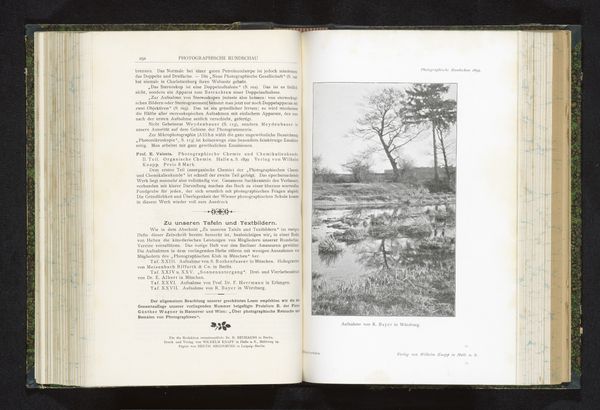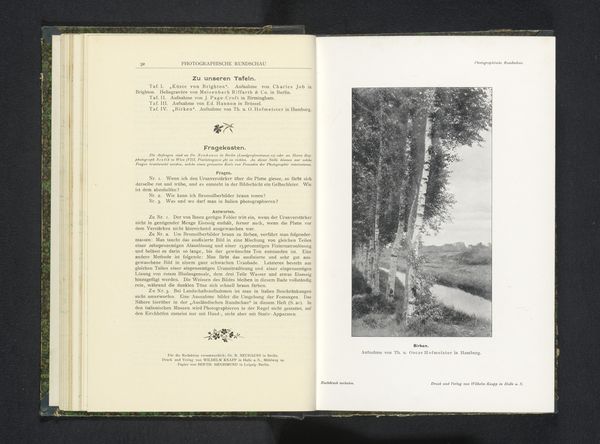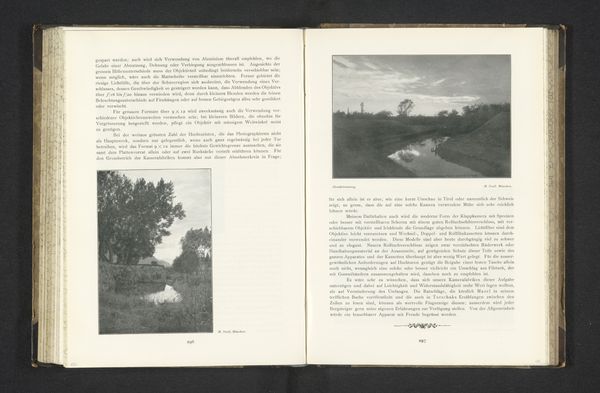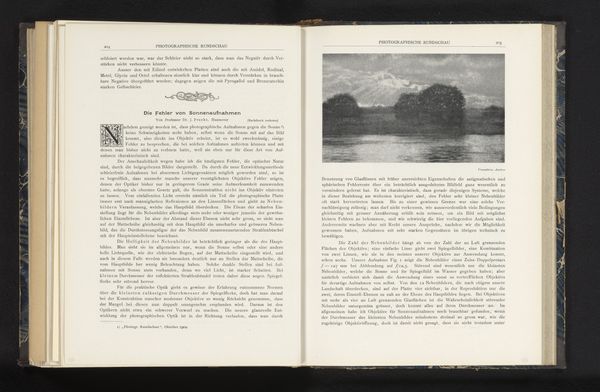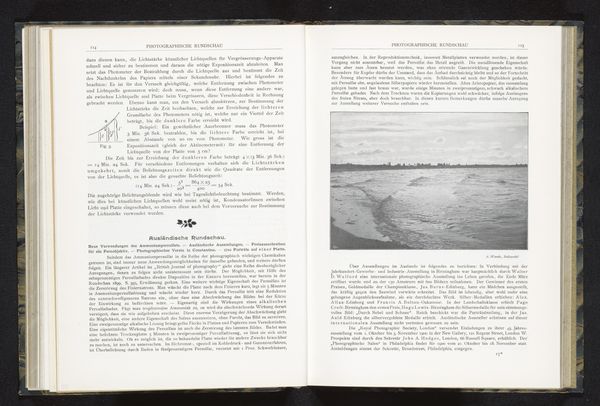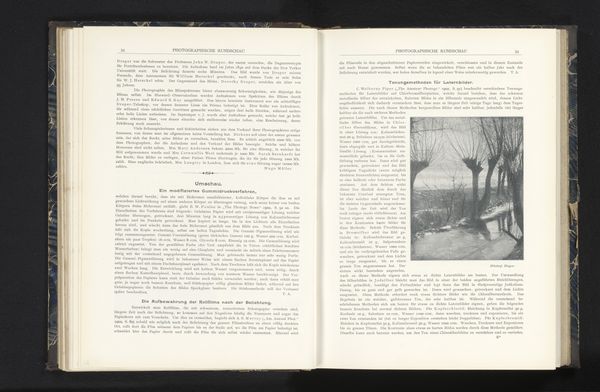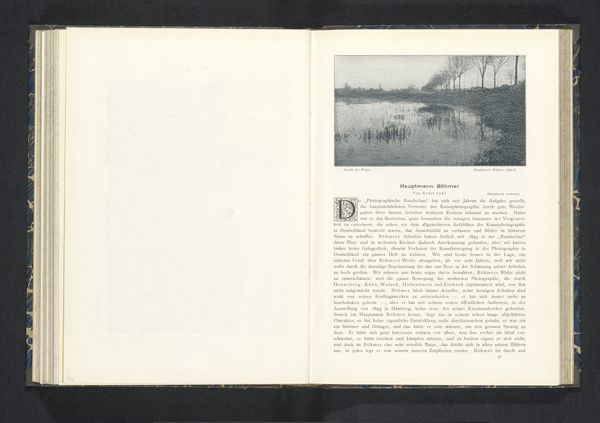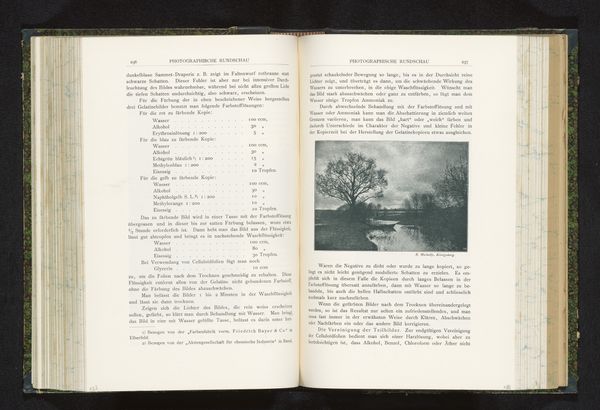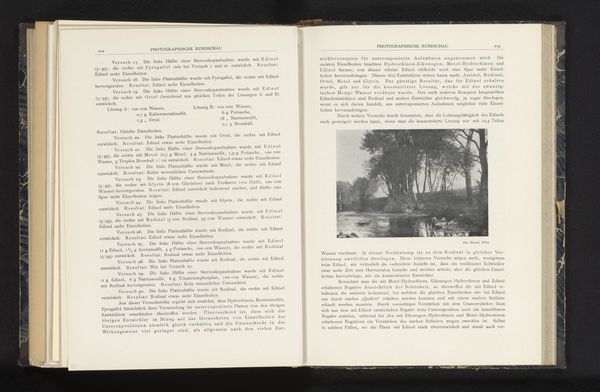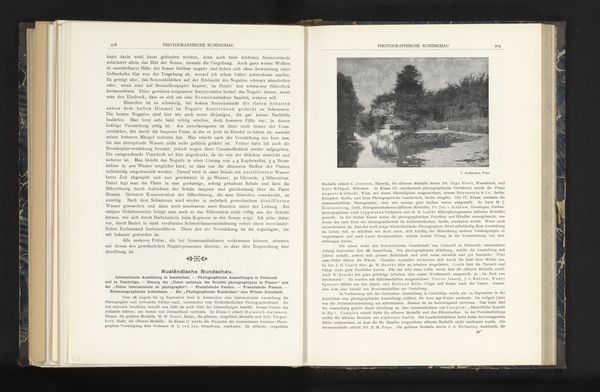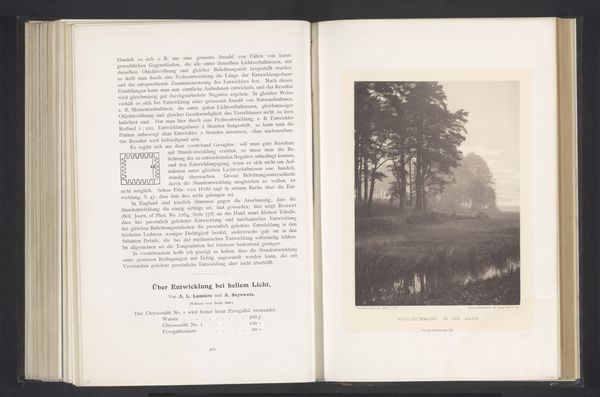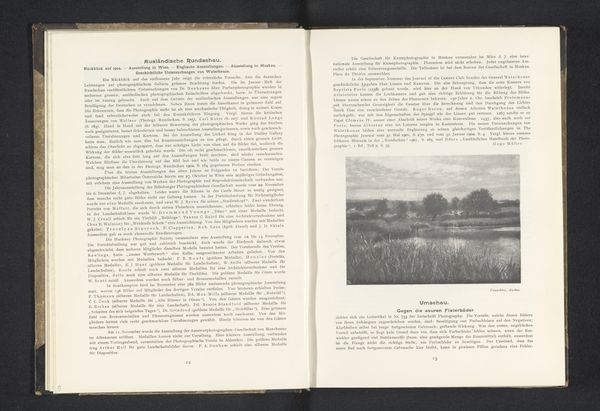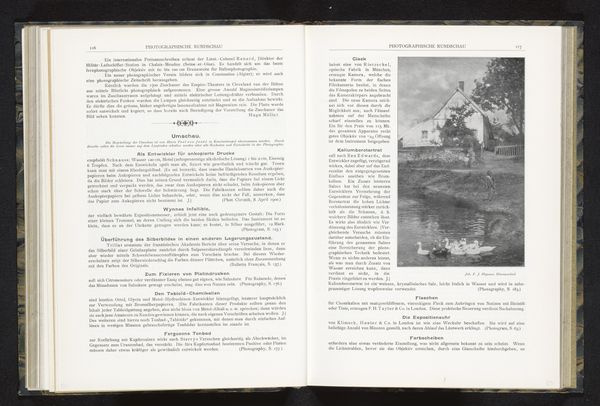
print, photography, gelatin-silver-print
#
tree
# print
#
landscape
#
photography
#
gelatin-silver-print
Dimensions: height 167 mm, width 115 mm
Copyright: Rijks Museum: Open Domain
Editor: So, here we have “Gezicht op een landschap met water en bomen” or “View of a Landscape with Water and Trees,” a photograph made before 1900 by A. Wande. It’s a gelatin silver print, and there’s something so peaceful about it. A still body of water reflecting a stark, leafless tree. What do you see in this piece? Curator: Well, I find it fascinating to consider photography from this period. Pre-1900, photography was still developing as an artistic medium, grappling with its relationship to painting and the "fine arts." This image, published in a book of artistic photography, suggests a desire to elevate photography to that level, using landscape as a "safe" and established genre from painting. The muted tones, the soft focus… what do those choices suggest about the artist’s intention? Editor: Maybe to create a timeless scene? Something…artistic rather than documentary? Curator: Precisely! Think about the social and cultural context. What kind of person is photographing this scene, including it in a publication like this? It suggests an educated, middle- or upper-class individual with the means to access new technology and the cultural capital to engage in artistic debates. This photographer wants their art taken seriously, in other words. How might a modern artist engage with this subject differently, I wonder? Editor: That's interesting, the photograph becomes part of a bigger picture of the development of photography, not just an individual work. Curator: Exactly, art is always a dialogue with the society of its time. By recognizing those societal structures, and understanding the intent behind it, we learn about much more than art! Editor: I never thought of photography from this time in that way; I’ll be sure to consider photography and the society in which it was made from now on. Curator: Indeed. Now, if we look at the image next to the original publication’s description, you begin to see even more layers of interpretation!
Comments
No comments
Be the first to comment and join the conversation on the ultimate creative platform.
